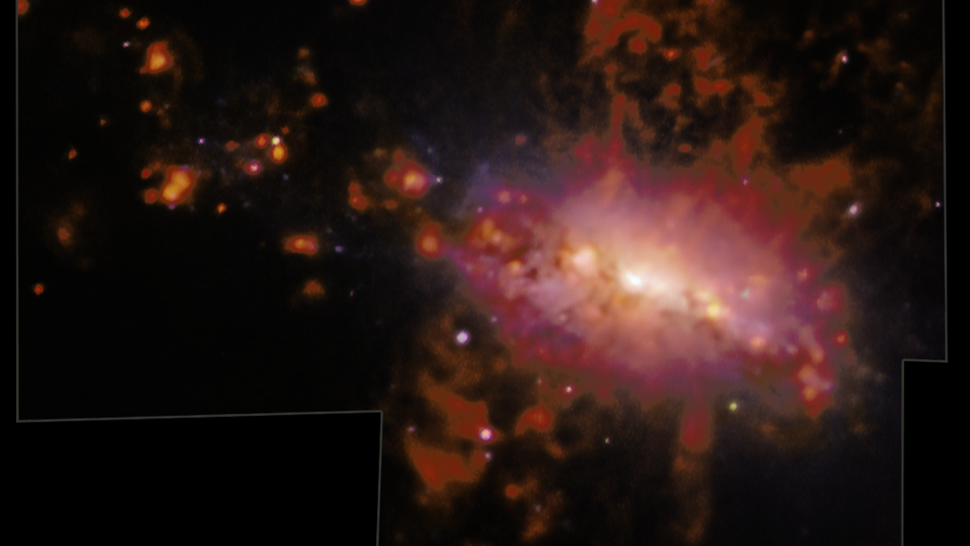Cosmic fountain is polluting intergalactic space with 50 million suns' worth of material [View all]
By Robert Lea published 18 hours ago
The 20,000-light-year-long fountain of gas is moving at 450 times the top speed of a jet fighter.

An image of a slightly blurry, splotchy pink structure against a black background.
The galaxy NGC 4383 evolves as gas flows from its core at tremendous speeds. (Image credit: ESO/A. Watts et al.)
Tremendous explosions in a galaxy close to the Milky Way are pouring material equivalent to around 50 million suns into its surroundings. Astronomers mapped this galactic pollution event in high resolution, obtaining important hints about how the space between galaxies becomes filled with chemical elements that eventually become the building blocks of new stars.
The findings came about when the international team studied NGC 4383, a spiral galaxy in the Coma Berenices constellation, using a Very Large Telescope (VLT) instrument called the Multi Unit Spectroscopic Explorer (MUSE).
Located around 62 million light-years from Earth, NGC 4383 is part of the Virgo Cluster and is undergoing a strange and turbulent evolution. This includes the galaxy spitting out an outflow of gas so great it stretches across 20,000 light-years of space. This gas jet, containing enormous amounts of hydrogen and heavier elements is traveling at speeds as great as 671,000 miles per hour. For context, that is around 450 times as fast as the top speed of a Lockheed Martin F-16 jet fighter.
"Very little is known about the physics of outflows and their properties because outflows are very hard to detect," team leader and University of Western Australia researcher Adam Watts said in a statement. "The ejected gas is quite rich in heavy elements, giving us a unique view of the complex process of mixing hydrogen and metals in the outflowing gas."
More:
https://www.space.com/gas-outflow-galaxy-space-pollution-cosmic-fountain
